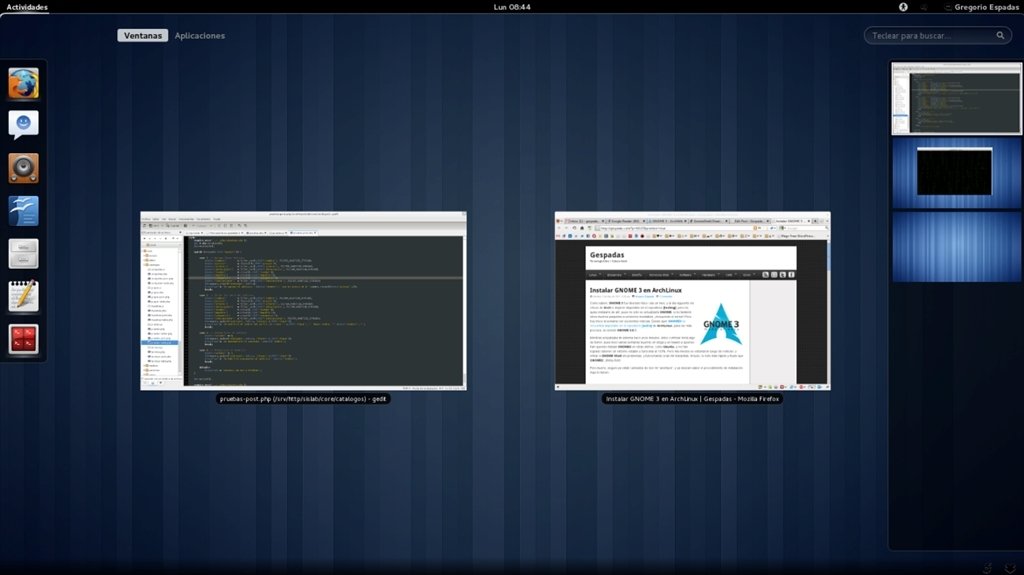

There’s the offline installer, which as the name suggests doesn’t need an active connection to the Internet and installs a customized Xfce desktop environment. In its bid to cater to a vast number of users with different use cases, the distro ships two flavors of the distribution-agnostic Calamares installer.
Arch linux install#
Another plus are the project’s custom tools, especially the Manjaro Hardware Detection tool (MHWD) that you can use to install the correct drivers for all attached devices.Īll things considered, with its bundled apps and custom tools, Manjaro is a ready-to-use desktop distro that scores highly in both form and function, and is currently one of the most popular Linux distros overall.Ĭonsidered by many as the spiritual successor to the once-popular-now-disbanded Antergos project, EndeavourOS is the newest distro in our list.

Manjaro also supports both Flatpaks and Snaps and you can install apps from their respective repos using Pamac. You can pull in additional apps using the intuitive Pamac package manager, which can grab apps from Manjaro’s official repositories, as well as the Arch User Repository (AUR). Manjaro includes all the usual mainstream popular apps such as the LibreOffice suite, GIMP, VLC, Firefox, Thunderbird, Steam client, and more. The installer gives you the option to choose between LibreOffice and FreeOffice as the default office suite, if you want to install one. Unlike Arch, Manjaro uses a customised Calamares installer, which makes it fairly easy to anchor the distro to your computer.
Arch linux download#
Besides the 64-bit ISOs, you can also download images for dozens of ARM-based devices such as the Raspberry Pi 4, Pinebook, and the Pinebook Pro. That is where Arch scores.Manjaro is available in three officially supported flavors (Gnome, KDE Plasma, and Xfce) and over half a dozen community-supported ones. But somebody does, and they have to learn somewhere. What keeps paid-for enterprise distros making money is mostly large teams of developers back-porting security fixes to old versions of all their various components, so you don't have to handle the integration work of keeping different versions of unrelated products working together. If you want to get to know newer versions of components, Arch is quite good for that, too. If you want to understand what your team's doing, Arch is a great way to learn.

If you're not there yet but want to be, Arch is a great way to build those skills. I would not tell my DevOps people to run production servers on Arch, but I certainly would expect each of them to be able to install an Arch system and get it up and running inside an hour. It is also what DevOps teams do, and this is the nature of running a modern production system on open-source software.
Arch linux software#
Arch linux free#
The thing that distinguishes Linux from other free Unix-related OSes such as FreeBSD is that Linux isn't a single piece of software from a single team. If you want that plus integrated snapshots and rollback, and a handy system-wide admin tool, openSUSE Tumbleweed delivers that. If you want an installation program and sensible defaults, plus a little more integration, then the Arch derivatives can help. Yes, sure, if you just have a job to do and don't want to take the time, pick a distro that's more stable and slower-moving. It isn't an ideal server OS, although some people do run it in production. There are newer rolling-release distros – notably openSUSE Tumbleweed, first released in 2014.Īs it heads into its third decade, Arch also now has multiple descendants of its own, such as Manjaro, Antergos successor EndeavourOS, and Garuda Linux.Īrch has survived and prospered, and what marks it out and makes it worth your time is the combination of simplicity, small size, great documentation, and the understanding that results from building your own OS. It's not a completely from-scratch project – it was inspired by Crux Linux, which is still around. Arch wasn't the first rolling-release distro – that was arguably Gentoo, founded in 2000 – but arguably, all the very early distros were to some extent.


 0 kommentar(er)
0 kommentar(er)
